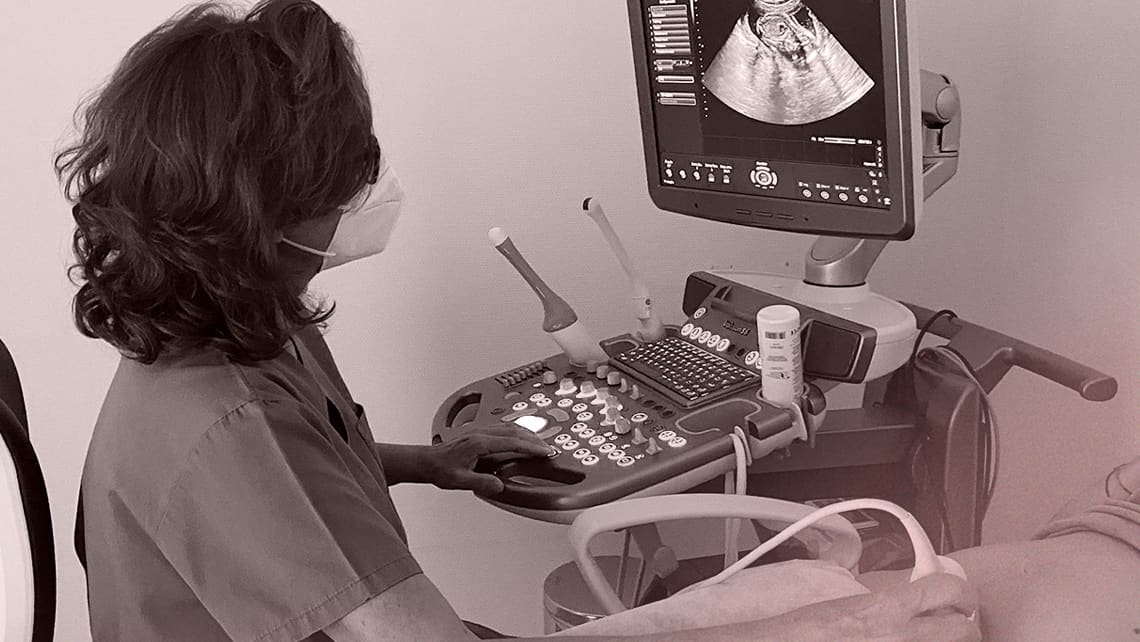
What are the causes of recurrent pregnancy loss?
Spontaneous abortion is defined as an unexpected pregnancy loss before the foetus is viable. In other words, before week 22 of pregnancy and under 500g in weight. The frequency rate of spontaneous abortion is estimated to be between 15 and 20% amongst the general population and it is the most common of all complications during pregnancy.
A small percentage (between 2 and 5%) of cases are recurrent and this is what is known as recurrent pregnancy loss (RPL).
Whilst there is no international agreement on the minimum number of cases in order for pregnancy loss to be classified as recurrent pregnancy loss and, therefore, for a patient analysis to be initiated, possible causes are investigated following the second pregnancy loss (be this consecutive or alternate).
To date, the two following proven causes of recurrent pregnancy loss have been identified.
- Genetic causes: a chromosomal abnormality in the embryo is by far the most common cause of spontaneous abortion during the first term of pregnancy (seen in at least 50% of all cases), particularly now that, over the last few years, women are older when they get pregnant for the first time. Age is the single most significant factor associated with decreased fertility and an increase in the embryo-based pregnancy loss rate. In all cases, and more frequently amongst younger women, a karyotype analysis of the parents and the miscarriage tissue obtained from the curettage is recommended.
- Antiphospholipid syndrome (APS) is detected in between 10 and 15% of women who suffer from recurrent pregnancy loss. This syndrome is part of a group of situations characterised by increased blood clotting and known collectively as trombophilias. Trombophilias can have a genetic and congenital origin (in these cases, children are born with an abnormality in factors linked to how thrombi form and dissolve) or they can be acquired as a result of an immunity abnormality. APS falls within the group of acquired trombophilias. On the whole, these women are more likely to suffer from thrombosis, recurrent pregnancy loss, abnormalities in the placenta and other obstetric issues.
There are several additional unclear causes that have been associated with recurrent pregnancy loss:
- Abnormalities in uterus anatomy: an estimated 10 to 15% of women who suffer from recurrent pregnancy loss have abnormalities of this kind. The septate uterus (a uterus that has a partition-type separation that divides the uterine cavity in two) is essentially the most common of them and the one with the worst prognosis.
- Endocrine: such as diabetes mellitus, abnormalities in thyroid function and obesity.
- Infections: Toxoplasma, Cytomegalovirus, rubella, herpes, ureaplasma, chlamydia, and so on. Numerous infectious agents can lead to pregnancy loss. However, none persist for such a great length of time that they cause recurrent losses. In other words, they could be a one-off or circumstantial cause but by no means the cause of recurrent pregnancy losses.
- Immunological issues that destroy the existing physiological ‘protection’ factor that make the mother receptive to the embryo and refrain the body from interpreting it as a foreign body and rejecting it. The complex mechanisms these situations produce are not yet fully understood. However, a great deal of work is being dedicated to this area in order to decipher them.
- Male factor: a causal value was not traditionally applied to the male factor, other than in males with karyotype abnormalities. Research performed over the last few years suggests that abnormalities in spermatozoa formation (spermatogenesis) can cause recurrent pregnancy loss. The importance of extensive analysis of the male factor and refraining from systematically assigning the cause to the female factor must be inferred from this research.
In a certain number of patients, even performing the appropriate existing analyses will not lead to cause identification. However, progress in medicine, biology and technology over the last few decades has made it possible to reach a causal diagnosis in many cases and correct or minimise possible causes. Specifically, in embryo-induced recurrent pregnancy loss (karyotype abnormality), a genetic and chromosomal pre-implantation diagnosis (PGD) means that healthy and abnormal embryos can be differentiated, significantly reducing the pregnancy loss rate in these cases. This is particularly relevant in light of the increase in the average age at which patients turn to reproductive medicine clinics.
Dr Lydia Luque, gynaecologist at Instituto Bernabeu.
